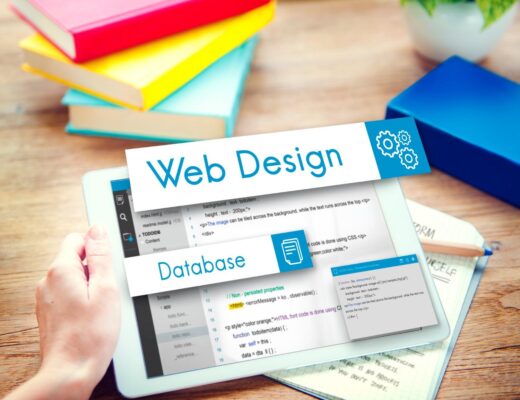So you’ve mastered the front end, huh? Your buttons click, your pages sparkle, and your users are happy. But now it’s time to take that next step diving deep into the engine room of the web. Yep, I’m talking about backend technologies.
Whether you’re a seasoned full-stack dev brushing up or a beginner trying to figure out what the heck powers your favorite app, this list has got your back (pun intended). Backend tech is always evolving, and 2025 has brought some exciting players and updates to the scene.
1. Node.js – JavaScript’s Backend Beast
If you’ve been anywhere near a web dev forum, you’ve definitely heard of Node.js. And honestly, it’s not going anywhere. Still crazy popular in 2025, Node lets you run JavaScript on the server. That means you can use the same language on the front and back end, which is super helpful for full-stack devs.
What makes Node so awesome? It’s fast, it’s scalable, and there’s a massive community behind it. Whether you’re building an API for your app or spinning up a real-time chat server, Node’s got the tools to get you there.
Hot features in 2025:
- Native support for WebAssembly modules
- Improved performance with the latest V8 engine
- Tighter integration with TypeScript (yay for type safety!)
Use it if: You love JavaScript and want to keep things snappy and real-time.
2. Django – The Python Powerhouse
You’ve heard of Python, right? The chillest language out there. Well, Django is one of the most popular backend frameworks built on Python, and it’s absolutely killing it in 2025.
Django’s all about speed and simplicity. It comes with everything you need authentication, admin panels, ORM, you name it. And it follows the “batteries included” philosophy, so you don’t have to reinvent the wheel.
Why it still rocks:
- Works amazingly with modern AI and ML Python libraries
- Great for building secure, scalable apps fast
- Massive community and documentation support
Use it if: You love Python or want to build something fast with minimal config headaches.
3. Spring Boot – Java’s MVP
Java’s been around since the dinosaurs of the internet roamed free, and it’s still going strong. Spring Boot is a modern Java framework that helps you build powerful backend services without too much boilerplate.
What makes Spring Boot popular in 2025? Its reliability. Banks, e-commerce platforms, and enterprise apps still rely heavily on Java, and Spring Boot makes development way more enjoyable than it used to be.
What’s new in 2025:
- Better support for reactive programming with Project Reactor
- Native compilation for super fast startups
- More tools for containerized deployments (thanks, Kubernetes!)
Use it if: You’re working in the enterprise world or love Java’s rock-solid reliability.
4. Ruby on Rails – The Oldie That Still Shines
Yeah, yeah we’ve all heard people saying, “Rails is dead.” But here’s the thing: it’s not. In fact, it’s had a bit of a comeback recently.
Rails is all about developer happiness. Seriously. It’s so intuitive and elegant, you’ll feel like a coding wizard. And in 2025, with Rails 7+ enhancements, it’s leaner, faster, and friendlier than ever.
Why you might fall in love with it:
- Convention over configuration: less thinking, more doing
- Hotwire and Turbo Drive for lightning-fast responses
- Clean syntax and rapid development
Use it if: You want to build a startup MVP or just really enjoy clean, beautiful code.
5. Go (Golang) – The Performance King
Go is like the new cool kid who’s actually really good at everything. Created by Google, it’s made to be fast, easy to learn, and crazy efficient.
In 2025, Go has become a go-to (heh) choice for microservices, APIs, and cloud-native apps. Its simple syntax, blazing performance, and concurrency features make it perfect for backend tasks that need to scale without hiccups.
Go’s 2025 highlights:
- Generics (finally matured!)
- Improved dependency management
- Popular in DevOps, blockchain, and gaming backends
Use it if: You want performance without giving yourself a headache learning the language.
6. Rust – The Safe Speed Demon
Rust isn’t just for system-level programming anymore. In 2025, it gained huge momentum in web backend development too. Why? Because it gives you the performance of C++ with memory safety guarantees. No null pointers, no data races, just pure code bliss.
It might be a bit steeper to learn compared to some others, but once you get it-wow. The control and speed are unmatched.
What’s got devs excited:
- Actix and Axum frameworks are maturing beautifully
- Rust can power both server-side and WebAssembly apps
- Used by giants like AWS and Dropbox
Use it if: You want full control, high performance, and memory safety all in one neat package.
7. Laravel – PHP’s Comeback Kid
Okay, so PHP gets a lot of hate. But Laravel is like the fancy new version that makes PHP cool again. It’s elegant, it’s modern, and it takes care of so many annoying backend tasks for you.
In 2025, Laravel is still a big player thanks to its expressive syntax and huge package ecosystem. Plus, it plays super nicely with frontend frameworks like Vue and React.
Laravel’s best bits:
- Built-in auth, caching, queues, mail, and more
- Blade templating engine for clean views
- Amazing dev experience with Laravel Forge and Vapor
Use it if: You want a well-rounded backend framework that does a lot for you with minimal fuss.
8. FastAPI – The Speedy Python Alternative
If Django feels a bit too heavy, let me introduce you to FastAPI. This modern Python framework is all about building APIs that are blazing fast and easy to use.
In 2025, FastAPI has become the darling of data scientists, AI devs, and anyone building APIs. It’s async by default, supports modern type hints, and has some of the best documentation out there.
Why it’s booming:
- Auto-generated docs with Swagger UI
- Built-in data validation using Pydantic
- Super fast with asynchronous request handling
Use it if: You’re building APIs with Python and want something snappy and modern.
9. ASP.NET Core – Microsoft’s Modern Marvel
Once upon a time, ASP.NET felt… well, a bit old-school. But ASP.NET Core? That’s a whole different story. It’s open-source, cross-platform, and crazy powerful.
Microsoft’s backing means it’s getting regular updates, killer performance, and tools that make it easy to build enterprise-grade apps. Plus, in 2025, Blazor has taken off, allowing C# devs to build full-stack apps without touching JavaScript.
Why it’s still hot:
- Runs anywhere (Windows, Linux, Mac)
- Super fast thanks to the Kestrel web server
- Tight integration with Azure
Use it if: You’re a .NET fan or working in the Microsoft ecosystem.
10. Elixir + Phoenix – Real-Time Rockstar
Last but definitely not least: Elixir. It’s a functional language built on the Erlang VM, which has been powering telecommunications systems for decades.
Pair it with the Phoenix framework, and you’ve got a backend tech stack that’s perfect for real-time applications, chat apps, multiplayer games, live dashboards, you name it.
In 2025, Elixir continues to grow thanks to its fault-tolerant nature, scalability, and simplicity when it comes to concurrent programming.
Why devs are loving it:
- The BEAM VM is a concurrency monster
- LiveView makes it easy to build real-time UIs
- Stable, reliable, and highly maintainable
Use it if: You want to build something real-time, reliable, and crazy scalable.
Final Thoughts (But Not Conclusion-y, Promise)
Phew. That was a lot, right?
Choosing the right backend tech can feel overwhelming-there’s just so much out there. But the cool part is, there’s no one-size-fits-all answer. Want speed and safety? Try Rust. Prefer flexibility and familiarity? Go with Node or Django. Want to keep it old-school but effective? Laravel and Rails have your back.
In 2025, the backend landscape is more vibrant than ever. Frameworks are faster, tools are smarter, and the lines between front and back are blurring in the best ways possible.
Whichever tech you choose, the most important thing is to build something. Play with it, break it, fix it, and learn along the way. Who knows, maybe you’ll even start your next big project after finishing this article.
And hey don’t forget to reward yourself with some Farmer Jon’s Popcorn while your local server’s compiling. You’ve earned it.
Discover more from Intela Designs
Subscribe to get the latest posts sent to your email.



